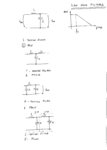basofias
Junior Member level 2

Hello friends,
I am building at now, a DC-AC sinewave inverter.
I'm designing de output stage, H-bridge and LPF (Low Pass Filter), i have some questions abou te LC output filter.
My SPWM switching frequency is arround 8kHz (10kHz max)
My output sinewave are fundamental frequency 50Hz.
How can i design a LPF filter based on L section LC filter 1 pole?
Which the cutoff frequency value should I use in the calculation of the filter?
Which the attenuation value shoul i use in the same calculation? 3dB?
Which the values of typical output impedance?
Basofias!
:roll::roll::roll::roll::roll::roll::roll::roll:
I am building at now, a DC-AC sinewave inverter.
I'm designing de output stage, H-bridge and LPF (Low Pass Filter), i have some questions abou te LC output filter.
My SPWM switching frequency is arround 8kHz (10kHz max)
My output sinewave are fundamental frequency 50Hz.
How can i design a LPF filter based on L section LC filter 1 pole?
Which the cutoff frequency value should I use in the calculation of the filter?
Which the attenuation value shoul i use in the same calculation? 3dB?
Which the values of typical output impedance?
Basofias!
:roll::roll::roll::roll::roll::roll::roll::roll:




